'A hobby that's gone crazy'

July/August 2023 California Bountiful magazine
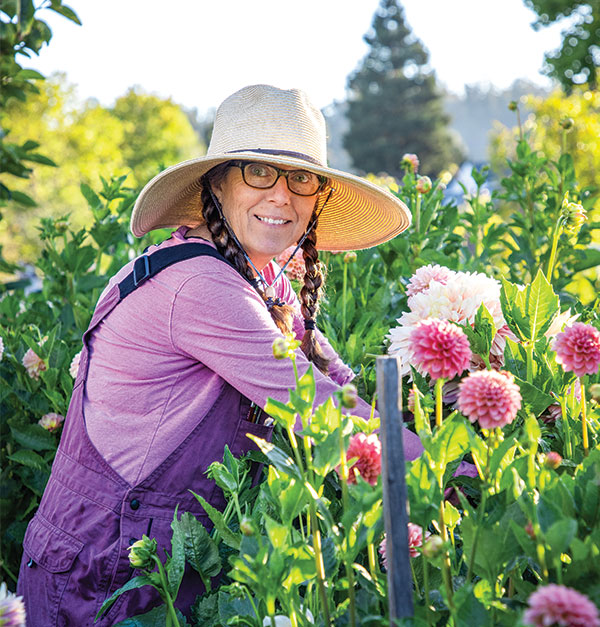
Farmer grows dahlias and develops new varieties
Story by Pat Rubin
Photos by Lori Eanes
Like most California farmers, Kristine Albrecht likes to walk among the rows of crops at her Santa Cruz farm. She reaches down and picks up a handful of soil to check the moisture level. She pulls a plant toward her to inspect the flowers.
She also watches weather reports and worries about heavy rains, destructive winds, spring hailstorms and late frosts.
But that’s where the resemblance to most other farmers ends. Albrecht isn’t growing almonds or cherries or tomatoes or corn. She’s cultivating 2,000 dahlia plants, and, from May until October, her 1/4-acre plot is a riot of color.
Plants towering 5 or 6 feet tall lean into the rows. Dahlia flowers in a variety of shapes and colors reach out to be noticed. Colors range from yellow and cream and white to red, purple and pink. Some colors are bright and bold, while others are quiet and understated. Her cactus-type dahlia flowers can be a foot or more across while the pom-poms can be less than an inch each.

Colorful creations
For almost 18 years, Albrecht has run Santa Cruz Dahlias, an organic dahlia farm. She’s built a reputation for being one of the top dahlia growers and hybridizers in the country. With the eye of an artist and the mind of a scientist, she’s produced new color varieties for both show and the florist trade.
In fact, her cultivars in soft hues of burgundy and pink and blush are in high demand with florists and wedding planners as well as home gardeners. Her new introductions often sell out in minutes.
Albrecht’s work with dahlias began almost accidentally. An experienced gardener, she grew giant pumpkins with her son but dabbled with dahlias in her flower beds. Her husband, Brian, suggested they use the flowers in their bed and breakfast.
“He wanted flowers in the rooms,” she explains. “We went from a few tubers to 60 to a couple thousand. We needed more room. We had a fallow piece of property at the time. It was flat and used to be a chicken farm.”
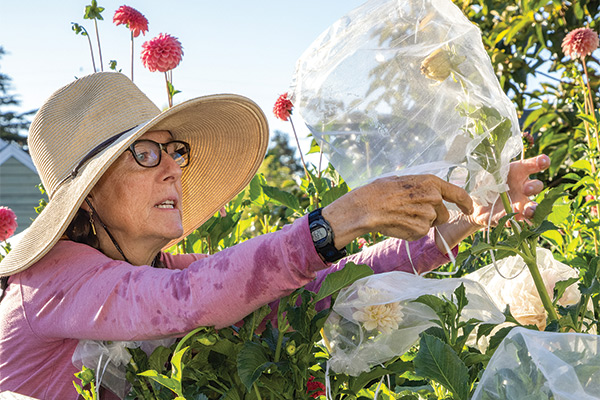
From gardener to farmer
In 2006, she tackled the daunting task of turning the weed-covered lot into a flower farm. “We pulled out piles of weeds and shrubs and blackberry vines,” she says. Years ago, the former owners used the property as a private dump. “So, we still find the occasional shoe.”
Healthy soil equals healthy plant, so Albrecht added plenty of organic matter. In addition, she joined the local dahlia society—even served as its president for a while—and learned from the experts about growing dahlias. She produced such an abundance of flowers she turned to local florists to see if they were interested in buying the extras. They were happy to have the flowers for bouquets, she explains, but told her they wished dahlias came in soft, muted shades of mocha, cream, pink, burgundy and blush.
The challenge was a big one since dahlias typically come in cheerful, bright colors. There are plenty of highlighter yellows and bright reds, she says.
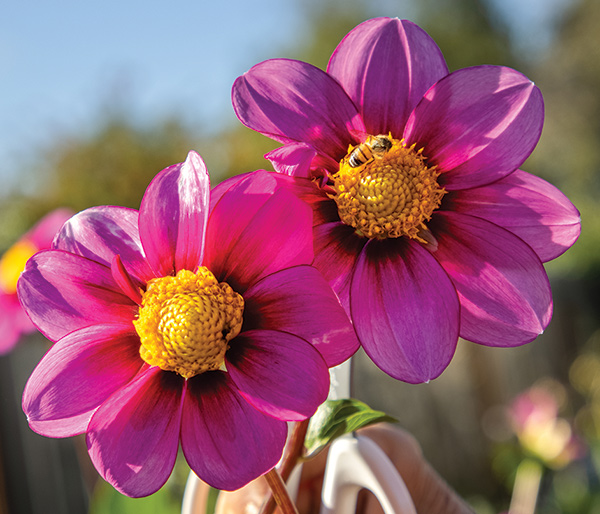
Meeting the challenge
Albrecht’s standards were high: She wanted to breed new colors for the floral industry but also wanted the plants to adhere to the rules of the American Dahlia Society. ADS requires that flowers last well in a vase or in a bouquet, and plants need to produce plenty of healthy flowers and tubers.
It’s a long process, and not always successful. “Sometimes you get what you want quickly; other times it takes years and more crosses, and sometimes you fail,” she says. “But I learned I have a good eye for what parent plants make good crosses. And I like to jump in 100% whenever I do something.”
Her efforts paid off, and her dahlias attracted the attention and praise of dahlia experts and judges across the country. She developed the award-winning KA’s Papa John, a creamy white dahlia up to 8 inches across and named for her late father, who taught her about gardening. It’s one of her favorites and great for decorating arches at weddings. “The petals look like they’re waving in the wind,” she says.
Her creations KA’s Cloud and KA’s Khaleesi also won awards. She won again for the largest dahlia ever shown in the U.S. in 2012, 2016 and 2019.
She credits her family and friends for her successes, especially Jan Palia and Iris Wallace for their help with the farm. “Jan works her magic with bouquets and Iris keeps things organized,” Albrecht says. She adds that both grow beautiful dahlias as well.

Almost year-round process
While she gets a short break from farm chores in the middle of winter, her new year starts at the end of the previous autumn when she digs all the tubers out of the ground, labels them carefully and puts them in a climate-controlled shed that keeps them at 43 degrees until it’s time to plant again. She also harvests seeds from crosses she’s made.
To get a jump on the season, Albrecht starts taking cuttings as early as December. She has a cutting bed set up in the living room with lights on up to 14 hours a day. “It’s a way to trick the cuttings and seedlings into thinking it’s spring so I get a head start on the season. The cuttings need to stay moist until they develop roots. After a couple of weeks, you have a little plant that is a clone of the tuber,” she says. “I love starting seeds and doing the cuttings because it feels like you’re gardening even though it’s too cold to be outside.”
By planting time, typically mid-April, Albrecht is ready to put about 1,000 tubers and about 1,000 seedlings into the ground. The tubers are a mix of potential parent plants for future crosses and varieties she’s evaluating for possible introduction into the trade. As the seedlings bloom, she will decide whether to keep them or toss them. She estimates she destroys 95% to 98% of the seedlings.
“It’s a hobby that’s gone crazy, but I really enjoy it,” she says. “I love to grow things and even though I know what I’m doing, I’m still amazed I get all these dahlias to grow for me.”
To share her expertise with others, Albrecht has created more than 150 educational videos on YouTube and has also written a book.
She plans to devote more time in the future to hybridizing efforts. “That’s where my heart is,” she says. Her goal is to develop a dahlia in a soft mocha/brown color.
Anyone who knows her is confident she will succeed.
What is hybridization?
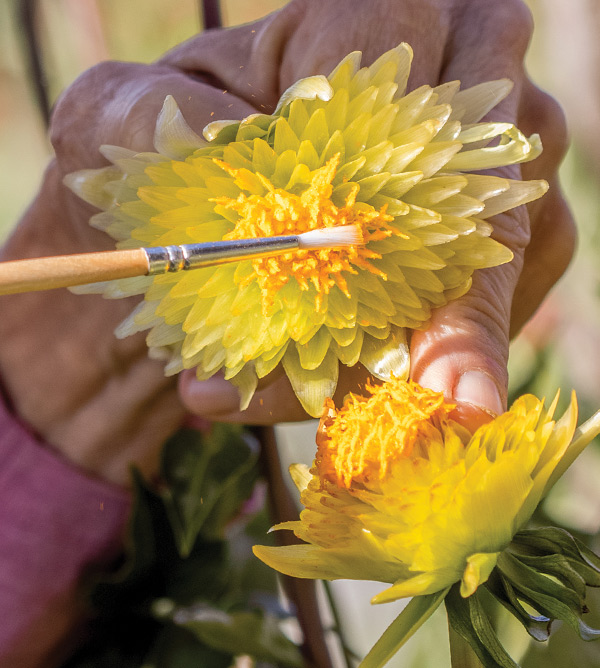
Plant hybridization is combining the pollen from two different plants and creating a new plant that is a cross between the two. Perhaps the hybridizer wants to create a new color. Hybrids cannot be propagated from the seed they produce because it will produce seedlings that vary widely. A new dahlia hybrid can be propagated from the many tubers it creates.
To create a hybrid dahlia, Santa Cruz farmer Kristine Albrecht uses a paintbrush to collect the pollen from one dahlia flower, perhaps a cactus-type dahlia, and transfers it to the flower of another dahlia flower, perhaps a pom-pom-type flower. She repeats the process several times to ensure good pollination.
She then takes an organza bag and covers the flower so the bees cannot get in with pollen they collect from other flowers throughout the garden.
She lets the flower mature and produce seed, and collects the seed when it is ripe. The following spring, she plants the seeds. As the plants grow and bloom, she evaluates them and decides if any are worth keeping.
Where to find them
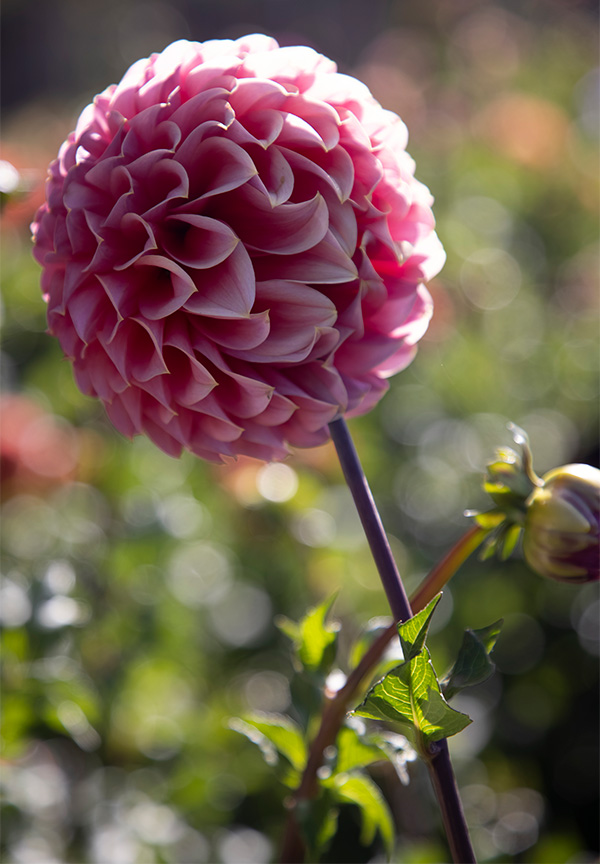
Kristine Albrecht does not sell dahlias at her farm, nor does she have visitors. Her dahlias are available through Stonehouse Dahlias, which sells rooted cuttings, and Dahlia Addict, which is a database of dahlia varieties available for mail-order sale to the U.S. and Canada, and Triple Wren Farms. All her dahlias begin with the prefix KA’s. Visitors to her website can check out the photo gallery of her dahlias. People can also follow her on Instagram @SantaCruzDahlias and on YouTube under her name. She has more than 150 educational videos on YouTube and some on her Instagram page. Viewers can learn how to set up a cutting bed, divide tubers and more. She’s also written a book (see Book Reviews).

